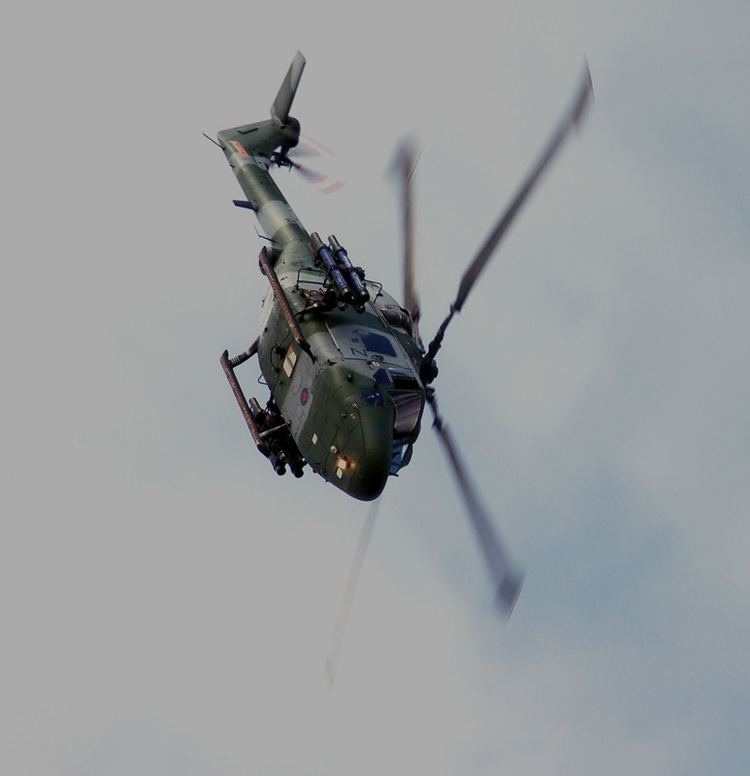Country United Kingdom Size 9 Officers (pilots) | ||
 | ||
Active Spring of 1968 to the Present Patron British Army Air Corps, volunteer | ||
The Blue Eagles are the helicopter aerobatic team of the British Army Air Corps. It is one of only six professional helicopter teams in the world, along with: Royal Navy Black Cats; Sarang of the Indian Air Force; Scorpion aerobatic team of the Polish Air Force; Rotores de Portugal and the Patrulla Aspa of the Spanish Air Force. They were formed in the spring of 1968 by instructors at the British Army Air Corps. They were established the following years with five helicopters. In 2001, the team included the first British female military display pilot.
History
The Blue Eagles were formed in the spring of 1968 by instructors at the British Army Air Corps centred at Middle Wallop who practised in their spare time. One year later the team was permanently established with five Bell-47G3B1 Sioux helicopters. Despite no official formation flying training from the army, the team achieved growing success and by 1974 they were including venues as far apart as the Channel Islands, Scotland and Germany. Nonetheless, the Army could not afford to maintain the Blue Eagles on a full-time basis and the team disbanded. Enthusiastic pilots at Middle Wallop were left to continue the team on their own time, and they kept the team and expertise alive. The team performed under a variety of names including the Eagles, Army Eagles, and Sparrow-hawks.
In 1982 the team briefly officially reformed as the Silver Eagles for the Army Air Corps' 25th anniversary. During this time the team flew the Bell/Agusta, the Aérospatiale Gazelle, the Westland Lynx, and the Westland Scout helicopters and occasionally even incorporated fixed-wing aircraft into their displays.
1992 saw the Eagles equipped with four Lynx helicopters which amazed crowds with their unprecedented versatility and power. However the Army needed Lynx helicopters elsewhere and could not justify the expensive flying time for an unofficial team. Thus the team adopted its current configuration of four Gazelles and one Lynx in 1993. The team experienced a strong resurgence and won the prestigious Wilkinson Sword at the Royal International Air Tattoo. Following this success the team was allowed to return to the Blue Eagles moniker in 1994, though the team is still composed entirely of volunteers.
In 2001, the team included the very first British female military display pilot, Sgt Julie Wiles.
The team continues to fly out of Middle Wallop and its repertoire includes formation flying, loops, rolls, breaks, and many other standard aerobatic stunts.
